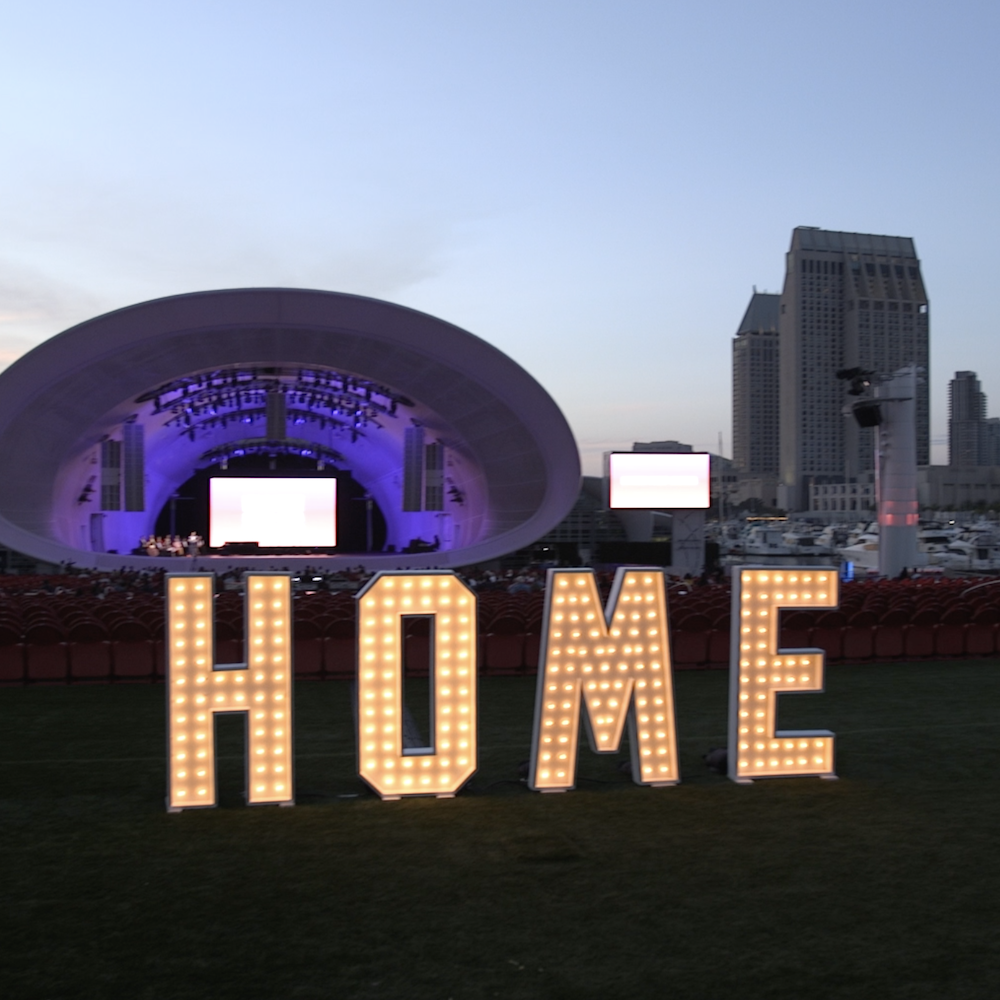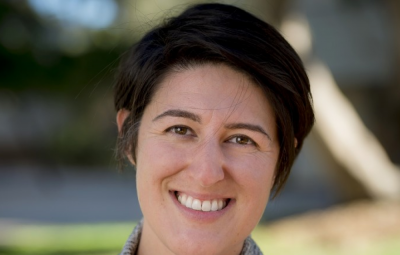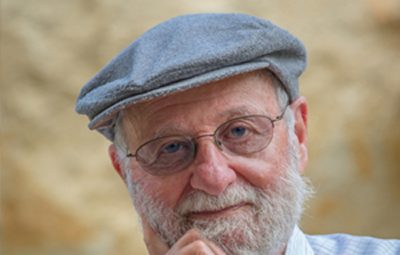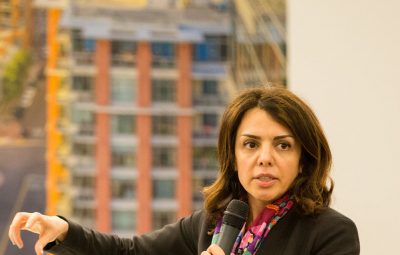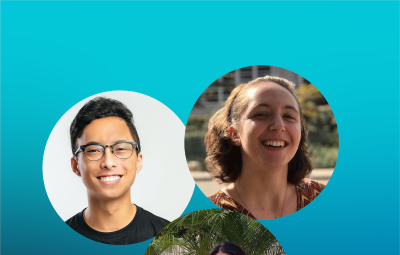As dusk hovered over The Rady Shell at Jacobs Park on October 3 at the ‘Welcome Home, Bienvenido a Casa’ event, reflections off the San Diego Bay illuminated an evening of excited anticipation more than five years in the making. Will the San Diego-Tijuana megaregion take home the win in their bid to be the 2024 World Design Capital? Or will it be their competitors, Moscow?
Hosting the event and spearheading the San Diego-Tijuana bid initiative is the interorganizational collaboration of Design Forward Alliance, UC San Diego Design Lab and the Burnham Center for Community Advancement, with the full support of the City of San Diego and City of Tijuana and regional elected officials. This collective was created to amplify San Diego’s capacity as a global leader in human-centered design-driven innovation. The combined communities of art, culture, business, education, civic and design worked together in a multi-year, multi-national collaboration culminating in this night of solidarity for the joint-effort to win the coveted World Design Capital designation—a year-long city promotion program that would begin in 2024 and put the region on the global stage as a world-class innovator of economic, social, cultural and environmental design solutions for a better society.
“It’s not just about gaining the World Design Capital title,” said the Director of The Design Lab, Mai Thi Nguyen. “It’s about how we actually want to contribute and collaborate on multidisciplinary design innovation throughout the region, nationally and globally.”

UCSD Design Lab Director Mai Nguyen is interviewed at the event
The binational community celebration was part of the October 3-5 World Design Organization (WDO) site visit, marking the final stage of the biennial global competition. The region hosted WDO Managing Director Bertrand Derome, representing the international non-governmental organization focused on promoting design in all of its forms and its ability to generate better products, systems, services, and human experiences. The multi-day tour showcased key design, civic, educational, and cultural venues and activities on both sides of the border, emphasizing the region’s capacity to not only deliver a year of world-class events in 2024, but to continue to utilize design to foster international collaboration, address complex societal challenges, and attract investment to the region.
San Diego Mayor Todd Gloria was on hand at the event, emphasizing the region’s economic legitimacy. Addressing the audience, he explained, “We have seen more venture capital in our region than ever before, with San Diego companies raising $5.2 billion last year, which is more than Austin and Denver combined.” Gloria said that he and Tijuana Mayor, Montserrat Caballero, who was recently elected at the end of September, are already in lockstep unifying both regions. Caballero wrote about the ongoing binational collaboration in her op-ed in The San Diego Union-Tribune, “We are two cities in two different countries, yet we are deeply connected. […] By recognizing our future as autonomous and collective, we are redefining border narratives and setting new standards for how to activate networks of change in all global cities.” One example of this new narrative is a featured design included in the bid of plans for an international meeting place accessible to both countries called Friendship Park, which is described by Gloria as a “half-acre plaza that overlooks the Pacific Ocean at the border of San Diego and Tijuana, just 15 miles south of Downtown San Diego.”

San Diego City Mayor Todd Gloria speaks to attendees
The San Diego-Tijuana collaboration is the first ever binational bid in the WDO program’s 13-year history. When asked what prompted this approach, Michèle Morris, President of Design Forward Alliance and Associate Director of The Design Lab, said, “We are one community with complementing strengths and shared challenges. There was never an option to submit a bid as one city or the other. A fundamental attribute of good design is authenticity, and our magic lies in our unique, veritable collaboration and shared identity.” Nothing in the rules officially stated that a binational bid was ineligible, so a united bid was submitted and accepted. “We’re rule breakers,” she said with an affable smile. “In a good way.”
Morris says that this nonlinear approach, the region’s unique position as a 21st century living laboratory, and deeply interconnected design and innovation communities are what landed them as finalists and exemplifies what is at the heart of the equal San Diego-Tijuana partnership. “We already know we are the ‘world design capital;’ now we want the WDO and the world to know.” she said. “This is absolutely in our DNA.”
Earning the designation as World Design Capital would spotlight the binational region’s design capabilities, creating new opportunities to strengthen and build global partnerships, innovate industry, and expand on lived and built infrastructures for over seven million people that call the megaregion home. The initiative is expected to fuel an estimated economic impact totaling $1.5 billion while creating and maintaining 46,000 direct jobs and 73,000 indirect jobs throughout the region. In his op-ed in the San Diego Union-Tribune after attending the event, Mayor Gloria cites how intentional, human-centered design has already addressed complex border challenges and transformed public space both in San Diego and Tijuana over the past decade with projects like Waterfront Park and Liberty Station on the U.S. side, as well as the Cross Border Express (CBX) project—a pedestrian bridge that connects San Diego passengers to the Tijuana International Airport, proving a more efficient way for commuters to cross the U.S.-Mexico border. “We are building bridges, not walls,” he explained at the event. Win or lose, he said the two regions’ interconnectedness has already been in place and will continue regardless.
Design, however, is not just about buildings and physical spaces. Representing the region’s combination of life science and design thinking at the event was Susan Tousi, Chief Commercial Officer from Illumina who said that the World Design Capital designation will attract “top talent who want to make a difference.” Headquartered in San Diego from its inception, Illumina has been close collaborators with the Design Forward Alliance and UCSD’s The Design Lab. Tousi explained the importance of design innovation. “When the focus is human-centered for science research and systems, our technology benefits from being more usable, more friendly,” she said. “We have a department for user experience and design that is passionate about simplifying our complex technology, making it more approachable for users, which has made all the difference and revolutionized design.”
The term “design” is often a confusing term to laymen audiences. San Diego Architect and Urbanist, Rob Quigley, whose local projects include the San Diego Central Library and the San Diego Children’s Discovery Museum, spoke at the event about the idea behind human-centered design. “There is not a lot of distance between art and science,” he said. “The very first houses I ever designed were for research scientists. We thought that we were in different worlds, but quickly realized we thought exactly the same way. This World Design Capital designation can only have a positive effect in bringing the two communities closer. The more common ground, the richer the relationships.”
Also present at the event was Don Norman, the Founding Director Emeritus of The Design Lab, who said he was delighted to see people across the spectrum in one place celebrating the fruits of their labor, which started with a 250-page bid to now being a finalist. “It’s not just about design,” he explained. “It’s about the whole character of the cities. People think San Diego, for example, is simply a tourist or convention town. What they don’t realize yet is that we have everything. Now they’ll know it.”
With the theme of the initiative being ‘HOME,’–an acronym for Human-centered, Open, Multidisciplinary/Multicultural, and Experimental–the community-led initiative of Design Forward Alliance, UC San Diego Design Lab and the Burnham Center for Community Advancement is linking their values of collaboration and transparency, inclusion and multiculturalism, respect for community, and human-centered design leadership with a more literal ‘home’ for all of us. After a nearly two-year pandemic with no definitive end in sight, border challenges that both link and divide the two nations, and social and environmental issues that need effective solutions, the San Diego and Tijuana collaboration serves as an example of how nations can come together on local and regional levels to explore beyond perceived boundaries for the benefit of people who call this region home.
As Morris emerged from backstage after closing the evening, she reflected on the years of work and collaboration that have gone into this initiative to be the next World Design Capital. “I’m so humbled and beyond energized to show the world what we already know here,” she said. “Even if we don’t win, we’re going to keep the San Diego-Tijuana momentum going, because that’s what we do. We do things the world hasn’t seen before.”
The winner will be announced in the coming weeks. If the San Diego-Tijuana region wins, San Diego would also be the first U.S. city to earn the designation, and Tijuana would be Mexico’s second win, having had Mexico City as a World Design Capital in 2018. The current designation is held by Lille Métropole in France, and the 2022 designation will go to Valencia in Spain.
